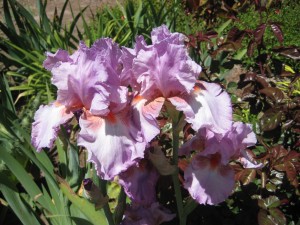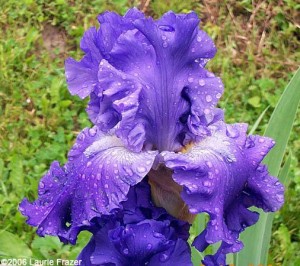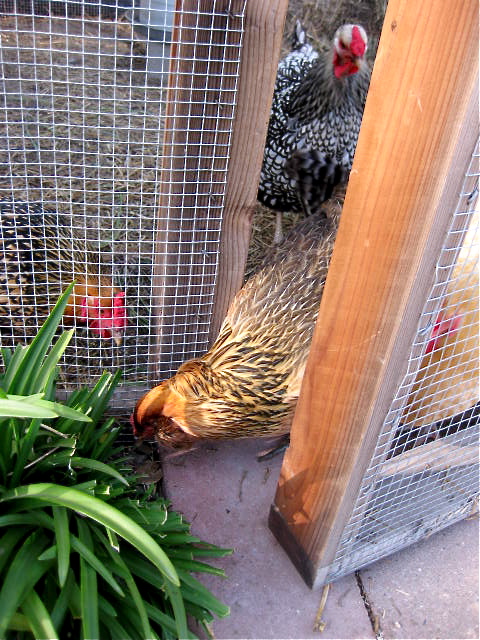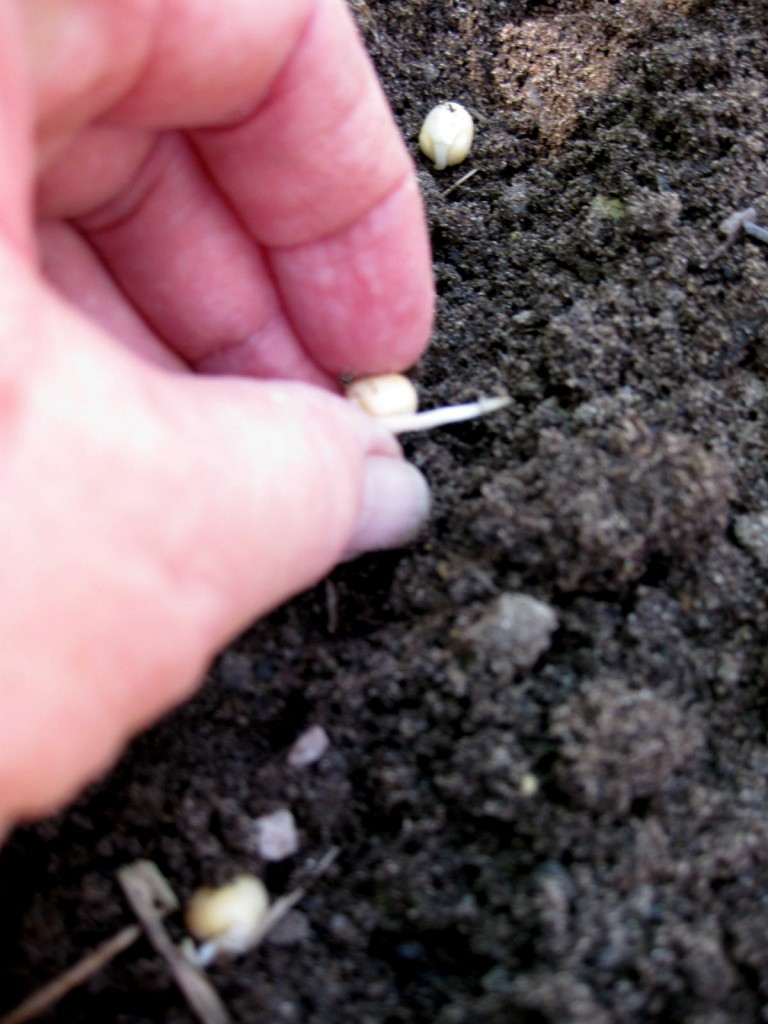
Bearded Irises grow and bloom really well along the coast. I’m especially fond of the varieties that rebloom and provide color from spring to fall. Irises have thick, fleshy, underground stems (called rhizomes) that store food produced by the sword-shaped leaves. The rhizomes grow best when planted at or slightly below the soil surface with feeder roots penetrating the soil below. When you purchase your Iris rhizome, the feeder roots will be dry. These can be cut off but are best left on to stabilize rhizomes during planting.
Site selection for Reblooming Irises
A full sun exposure is preferred, however, some of the delicate pink and blue Irises hold their color better in partial shade. Good soil drainage is essential to prevent rhizomes from rotting. It may be necessary to plant the rhizomes in raised beds or containers to obtain proper drainage. Clay soil should have organic matter (pine bark, compost) incorporated into it to improve drainage. Deer don’t appreciate Irises so they are considered deer-resistant and do not have to be contained within a fence.
Fertilization of Irises is important to get best results, but must be done in moderation. Nitrogen, potash, and phosphorus are essential for Iris. At planting, incorporate a low-nitrogen fertilizer such as 5-10-10 into soil.

Planting Reblooming Irises
It is best to plant Irises in the Fall to allow them to become well established in the winter. Container-grown iris can be planted in the spring. In a well-prepared bed, dig a shallow hole large enough to accommodate the rhizome or clump of rhizomes. Form a mound of soil in the center for the planting base. Make the mound high enough so the top of the rhizome is slightly above soil level. Spread the roots around the mound, fill with soil, and water. For a mass of color, plant at least three rhizomes (spaced 8 to 10 inches apart) or plant undivided clumps; point each fan of leaves away from the center of the group. Clumps should be spaced 18 inches apart.
Care and Maintenance of Irises
Before flowering, water plants often enough to keep the soil moist but not wet. Reblooming Iris should be watered during the summer. After flowers fade, cut flower stalks back to an inch or two above the rhizome to prevent seed formation. Reblooming Iris should be fertilized in the spring as new growth begins and after spring-flowering ends. Irises should not be mulched. In early Fall, cut leaves 6 to 8 inches from the ground.
After 3 to 5 years, Irises generally become crowded and should be divided. Irises can be divided any time, but many growers prefer to divide 4 to 6 weeks after the flowering period. Cut the leaves to one-third their length. Dig the clump and wash soil off with a hose. Separate young rhizomes and store or replant.



